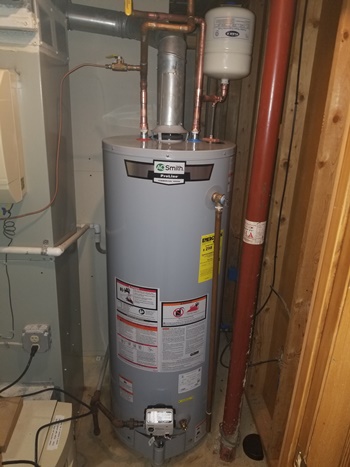Maintaining Your Home's Hot Water System: Essential GuidelinesMaking Sure Longevity of Your Home's Hot Water System: Maintenance Tips
Maintaining Your Home's Hot Water System: Essential GuidelinesMaking Sure Longevity of Your Home's Hot Water System: Maintenance Tips
Blog Article
What're your beliefs on How to Maintain a Hot Water Heater in a Few Simple Steps?

Hot water is essential for daily convenience, whether it's for a rejuvenating shower or cleaning meals. To guarantee your warm water system runs efficiently and lasts much longer, regular maintenance is crucial. This article gives practical ideas and insights on just how to keep your home's hot water system to stay clear of interruptions and pricey repair work.
Intro
Preserving your home's warm water system might appear challenging, yet with a few easy actions, you can ensure it runs efficiently for many years ahead. This guide covers every little thing from understanding your hot water system to do it yourself maintenance ideas and knowing when to call expert help.
Relevance of Maintaining Your Warm Water System
Regular maintenance not just expands the lifespan of your warm water system yet also guarantees it runs successfully. Disregarding upkeep can bring about lowered performance, greater power expenses, and also premature failure of the system.
Indications Your Warm Water System Demands Maintenance
Understanding when your warm water system requires attention can avoid significant concerns. Look out for indications such as irregular water temperature level, weird sounds from the heater, or rustic water.
Comprehending Your Warm Water System
Prior to diving into maintenance tasks, it's practical to recognize the basic parts of your warm water system. Generally, this includes the water heater itself, pipes, anode rods, and temperature level controls.
Month-to-month Upkeep Tasks
Normal month-to-month checks can help catch minor problems before they intensify.
Purging the Hot Water Heater
Purging your hot water heater gets rid of debris build-up, boosting efficiency and prolonging its life.
Checking and Replacing Anode Rods
Anode poles protect against deterioration inside the storage tank. Checking and replacing them when worn out is essential.
Examining and Adjusting Temperature Settings
Adjusting the temperature setups makes certain optimum efficiency and safety and security.
Do It Yourself Tips for Upkeep
You can do a number of maintenance tasks yourself to keep your hot water system in leading problem.
Looking for Leakages
Frequently evaluate pipelines and connections for leakages, as these can cause water damage and greater expenses.
Testing Stress Relief Valves
Testing the stress relief valve guarantees it works properly and stops excessive stress accumulation.
Insulating Pipelines
Insulating warm water pipes reduces warmth loss and can save power.
When to Call a Professional
While do it yourself maintenance is advantageous, some issues call for expert competence.
Complex Issues Calling For Expert Help
Instances consist of major leakages, electric problems, or if your hot water heater is regularly underperforming.
Regular Expert Maintenance Conveniences
Expert maintenance can consist of complete evaluations, tune-ups, and making certain compliance with safety and security requirements.
Conclusion
Normal maintenance of your home's warm water system is necessary for efficiency, long life, and expense financial savings. By complying with these pointers and understanding when to seek professional aid, you can guarantee a reliable supply of hot water without unexpected disruptions.
How to Maintain an Instant Hot Water Heater
Before tinkering with your hot water heater, make sure that it’s not powered on. You also have to turn off the main circuit breaker and shut off the main gas line to prevent accidents. Also turn off the water valves connected to your unit to prevent water from flowing into and out of the appliance. 2. When you’re done, you have to detach the purge valves’ caps. These look like the letter “T” and are situated on either side of the water valves. Doing so will release any pressure that has accumulated inside the valves while at the same time avoid hot water from shooting out and burning your skin. 3. When the purge valves’ caps are removed, you have to connect your hosing lines to the valves. Your unit should have come with three hoses but if it didn’t, you can purchase these things from any hardware or home repair shops. You can also get them from retail stores that sell water heating systems. Read the user’s manual and follow it to complete this task properly. When the hosing lines are connected, open the purge port’s valves. 4. You should never use harsh chemical cleaners or solutions when cleaning your unit. Make use of white vinegar instead. It should be undiluted and you’ll probably use about 2 gallons. 5. Now flush your water heater. This task should probably take about 40 minutes. We can’t give you specific directions for this because the procedure is carried out depending on the type, model and brand of your heater. With that being said, refer to the user’s manual. 6. When you’re done draining the unit, you have to turn off the purge port valves again. Remove the hosing lines that you earlier installed on each of the water valves. Put the valve caps (purge port) back in their respective places and be very careful so as not to damage the rubber discs that are found inside these caps. 7. Now that everything’s back in place, check your user’s manual again to find out how to reactivate your water heating system. 8. Once it is working, turn one of your hot water faucets on just to let air pass through the heater’s water supply pipes. Leave the tap on until water flows smoothly out of it. https://www.orrplumbing.com/blog/2014/september/how-to-maintain-an-instant-hot-water-heater/

I have been very drawn to What Kind of Maintenance Do Water Heaters Need? and I really hope you appreciated the new entry. Sharing is good. Helping people is fun. I cherish your readership.
Contact Us Now Report this page